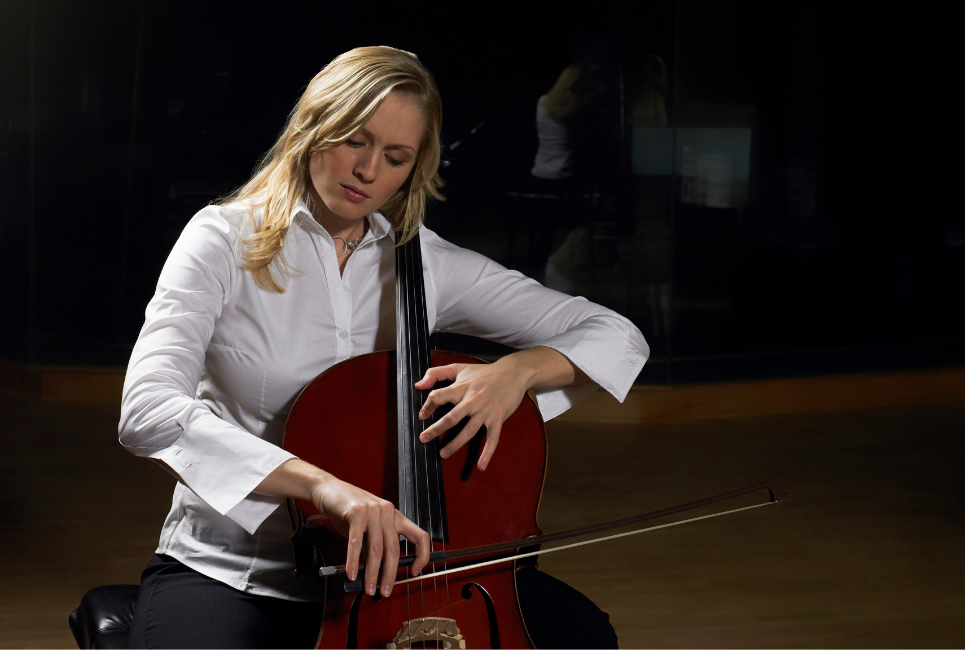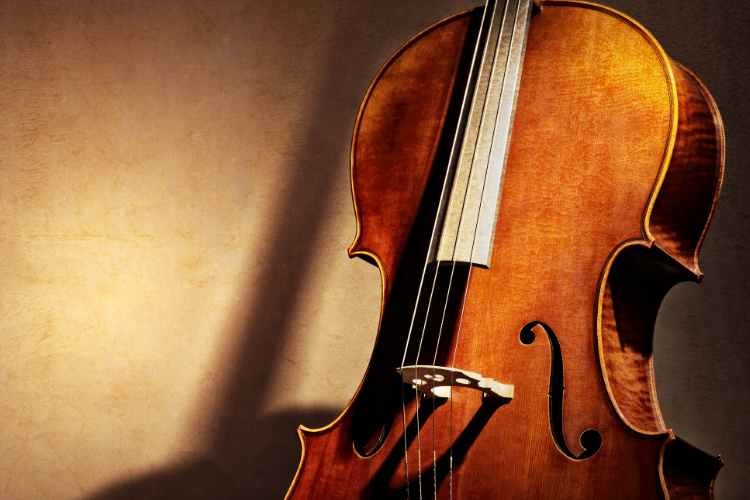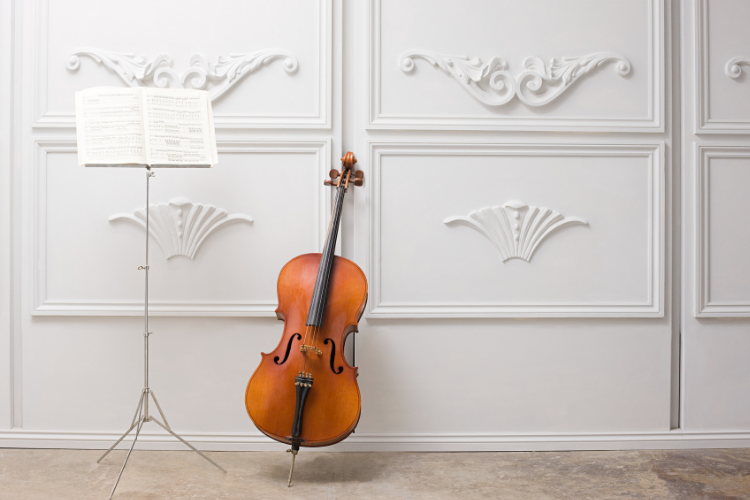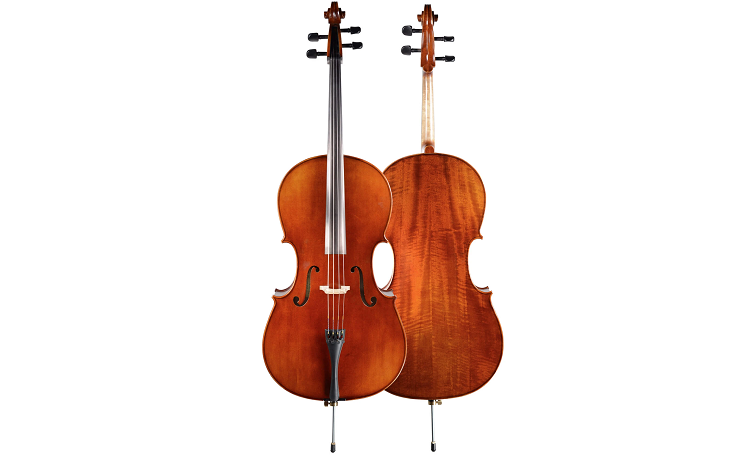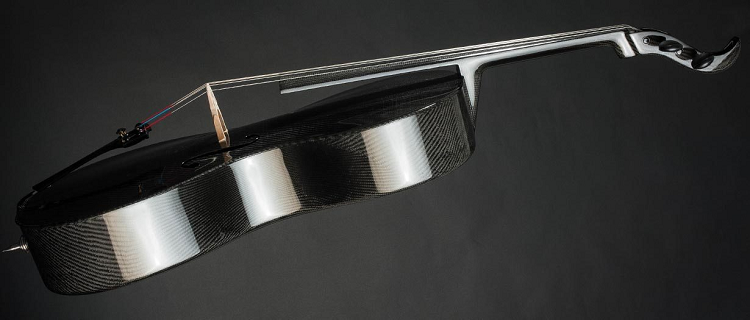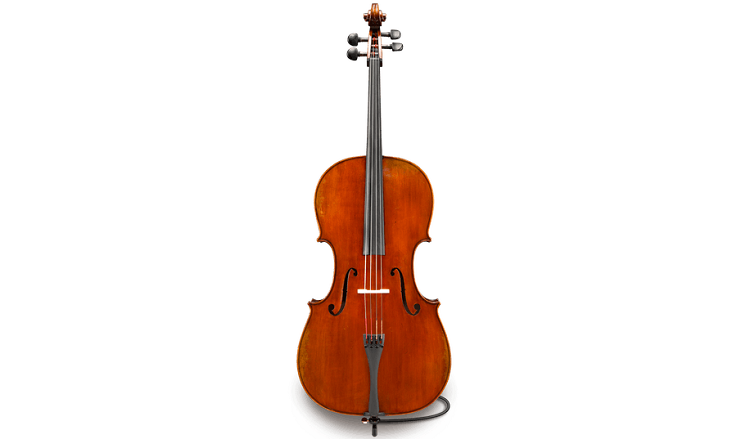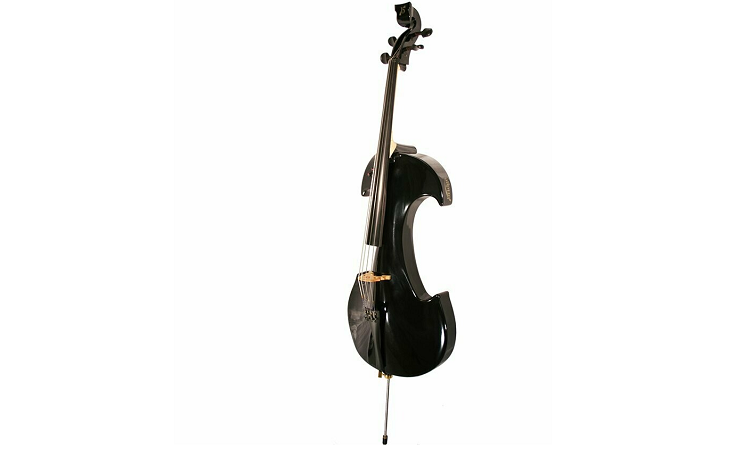- Best Carbon Fiber Cello Options - December 28, 2021
- How to Find the Best Electric Cello: Why I Love The Bridge Draco - December 16, 2021
- How to Find the Best Jazz Cello: Jazz Cello’s I Recommend - December 13, 2021
String quartets are wonderful, but many cellists want to expand their repertoire beyond the traditional classical fare. Cellists perform with rock, pop, and dance bands. Many modern stage musicals include a cellist in the orchestra pit. And there have been jazz cellists since the beginnings of jazz.
Cellos are not the first instrument you think of when you hear the word “jazz.” But with its range of over four octaves, a cello gives you lots of room to improvise. And while cellists can have a hard time being heard over saxophones and trumpets, amplification can make cellos stand out even in a metal band.
Even if you specialize in classical music, a good deal of 20th-century classical music has a jazzy feel. (Think Leonard Bernstein, George Gershwin, and John Williams).
A good cello will work in any genre, but you don’t just want a good cello; you want the best. And so, I bring you the best jazz cellos available today.
How I Chose the Best Jazz Cellos
While music is music, different styles have different requirements. A trombone suited for Wagner might not be the best choice for a Dixieland band. When looking for a jazz cello, here are some of the things I focused on.
Amplification
Cellists have no problem being heard in a string quartet or orchestra hall. Soloing before a big band is an entirely different matter. If you are going to be playing jazz gigs, you will almost certainly have to mic your cello at some point. And at that point, you are going to discover that amplifying a cello at a noisy gig is no small task.
Putting a pickup on your cello solves many of the problems you run into when using a microphone. It saves you from picking up background chatter and gives you a better, more natural sound. But cheap pickups don’t have the best fidelity, and even more expensive pickups can be fragile and require precise placement.
A cello with a built-in pickup can ensure you get the best possible sound from your instrument and save you hours of fiddling and sound checks.
Some instrument makers now offer electric cellos built like solid-body electric guitars. While a cello with a built-in pickup can be played with or without amplification, an electric cello must be amplified.
Electric string instruments have been used in jazz before, notably by famous jazz-fusion violinist Jean-Luc Ponty. And while it may not be your first choice for a baroque performance, an electric cello might be perfect for a lot of modern classical music.
Ability Level
Cellos come in a wide range of sizes and are built for cellists at every performance level. A young student has different priorities than a seasoned professional cellist.
Any list of the best jazz cellos must first determine “best for whom?” I’ve provided instruments that should suit jazz cellists at every stage of their career, be they major label recording artists, talented amateurs, or enthusiastic beginners.
Cost
You should look for the best cello you can afford, but you may not need the most expensive cello available. A beginner is better off buying a good student cello and spending the extra money on music lessons. In an era of $20 million Stradivarius cellos, you can spend a lot on a good instrument. I want to help you spend your money wisely.
You can find cheaper cellos than my choices, and you can find cellos costing a great deal more. These cellos will give you the best bang for your buck. Music may not make you rich, but my cello choices will leave you sounding your best without sending you to the poorhouse.
Top Pick: Eastman Albert Nebel VC601+
While all of these cellos are excellent, Eastman’s Albert Nebel VC601 cello is the best all-around cello for serious jazz cello players. The VC601+ will sound great playing any genre of music, is a strikingly beautiful instrument that will catch audience’s attention and can be used with or without the built-in pickup.
Other cellos on this list may be better suited to particular situations. Still, the Albert Nebel wins for its versatility and its fabulous sound.
The Best Jazz Cellos
Best Beginner Jazz Cello: DZ Strad Student Cello Model 101
Are you interested in cello but prefer jazz to symphonic music? There’s no need to trade in your hipster sunglasses for an orchestra tuxedo.
With its four-octave range, the cello can reproduce lines by trombones, saxophones (baritone through alto), or guitars. And a very young student interested in mastering the double bass might find an appropriately sized cello easier to handle.
DZ Strad’s Model 101 cello costs a bit more than other so-called “student” cellos on the market. But while many of those cheaper cellos use painted hardwoods for their fingerboards, DZ Strad makes theirs out of genuine ebony.
Ebony won’t stain your fingers during hours practicing difficult leads, nor will your fingerboard wear down and need replaning or replacement within a few months. DZ Strad also uses solid hand-carved spruce on the top and solid maple on the back and sides. Most cheaper student cellos use an acoustically inferior laminate board.
DZ Strad string instruments are popular with Suzuki teachers and students for their warm, mellow tone and high price-to-value ratio. As your cello skills improve, you may want to look at more advanced cellos.
But for serious beginners, the DZ Strad 101 will be an excellent choice that will help you master your new instrument and will serve as a great backup or rehearsal cello after you upgrade.
Pros
- 100% handmade to professional standards
- Available in 1/8, 1/4, and 1/2 sizes for very young students
- Comes ready to play with bow, rosin, and D’Addario Prelude strings
Cons
- Soft carrying bag does not offer much protection from impacts
Best Intermediate Jazz Cello: Fiddlerman Artist Cello Outfit
A student cello will get you through practice and student rehearsals, but you will want a better instrument as your skills progress. Fiddlershop founder Pierre Holstein spent years playing violin for Sweden’s Malmö Symphony Orchestra before opening Fiddlershop and providing violin pointers on his Fiddlerman YouTube channel.
The Fiddlerman Artist cello is made in a Chinese workshop by some of China’s finest workmen. After arriving in the US, Fiddlershop subjects instruments to rigorous testing and has on-staff luthiers fine-tune and correct any deficiencies.
Fiddlershop scores points for its superb customer service. The Artist, like all Fiddlerman instruments, comes with a lifetime warranty. It comes in 1/2, 3/4, and 7/8 sizes for cellists who find a smaller instrument more comfortable.
The sound is rounded, rich, and powerful enough to stand out in most venues. If you’ve moved on from recitals to competitions, the Artist will help you stand out amongst your opponents.
If you are upgrading from a student cello, you will find Fiddlerman’s Artist cello more responsive. This extra detail will let you shine on difficult, fast passages and provide more precise vibrato and emotion on slower phrases.
The Artist will serve you in a conservatory and on a stage. Fiddlerman offers a superb price to value ratio, and the Artist punches well above its price tag.
Pros
- Comes ready to play with bow, rosin, and case
- Excellent customer service and support
- Superb price-to-value ratio
Cons
- Need to install pickup for amplified performances
Best Touring Jazz Cello: Luis and Clark Carbon Fiber Cello
Cellos are great instruments, but their size and construction makes them heavy and fragile. Massachusetts luthiers Luis and Clark build their cello bodies with carbon fiber composites that are lighter than wood but stronger than steel.
Carbon fiber does not swell or shrink with humidity or temperature change, so the Luis and Clark cello can be played in conditions that might damage a wood cello or throw it out of tune.
Luis and Clark don’t just use high-tech materials. They have also redesigned their cellos in light of modern science. The Luis and Clark cello is played closer to the body, limiting the need for awkward bow movements that can cause “cellist’s shoulder.”
Luis and Clark also use much less endangered ebony wood on their cello, making it more environmentally friendly as well.
So how does it sound? Carbon fiber isn’t just strong. It’s also resonant. This makes the Luis, and Clark cello responsive and articulate on even the softest passages yet gives it the power to hold its own with a big band or symphony orchestra.
Luis and Clark also offers a 1/2 size cello for young players and a five-string cello that gives you extra range and fingering options. NYC Downtown jazz fixture Erik Friedlander is among the many satisfied professional cellists who use Luis and Clark, as is Yo-Yo Ma.
Pros
- Carbon fiber bodies assembled by hand by trained luthiers
- Can be maintained with an occasional Windex wipedown
- Powerful projection and great fortissimo
Cons
- Expensive
Best Jazz Cello with Pickup: Eastman Albert Nebel VC601+
The 601+ is Eastman‘s much-loved Albert Nebel 601 cello with a pickup embedded into the top before varnishing. This saves you the trouble of readjusting the bridge every time you want to plugin.
A 3.5mm jack lets you plug your instrument into the amplifier, DAW, or controller of your choice. If you are playing chamber jazz, just leave your instrument unplugged and give your audience all the warm, rich tones they expect from a cello.
The Albert Nebel, 601+’s top, is hand-carved from German spruce, with German maple back and ribs. The wood is aged for several years to give the 601 the depth and complexity of tone we associate with antique string instruments.
The hand-inlaid purfling is decorative and helps protect the cello body against cracks from humidity, temperature changes, and small bumps. And the antiqued varnish makes the 601+ look as beautiful as it sounds.
The 601+ is slightly shorter and deeper than most cellos, which gives it the extra power you need for loud passages with the resonance that helps softer lines project. Its pre-embedded pickup gives you the option of plugging in.
Still, it can also be bypassed if your stage or recording engineer wants to use a microphone. The question of mini-microphones over pickups is a hotly debated one amongst recording engineers. The 601+ gives you and your producer the freedom to choose.
Pros
- Rich tone with fast action makes it great for both orchestral and jazz music
- Aged wood gives the 601+ a vintage sound
- Embedded pickup makes amplified performances and recording sessions much easier
Cons
- Only available in 4/4 sizes, so those cellists who prefer a 7/8 are out of luck
Best Electric Jazz Cello: Bridge Draco
If you want an instrument that stands out on stage, the Bridge Draco is for you! While many electric string instruments use boxy or utilitarian designs, the Draco’s bright colors and sweeping curves make it look like a prop from a Tim Burton film.
The Draco comes with a fiberglass case and a carbon fiber composite bow. Its hollow carbon fiber/Kevlar composite body produces a rich, warm resonance which is lacking in many cheaper electric cellos.
The Draco allows you to use pedals for wah-wah, reverb, and many other effects. British neoclassical/ambient electric cellist Simon McCorry uses loops and signal manipulation to fuel improvised explorations on his Draco, praises the instrument for its electronic capabilities, and calls it a “pleasure to play.” You can run the music through multiple effects and transitions
An electric cello differs from a regular cello as much as an electric guitar differs from an acoustic guitar. And because the electric cello is a new instrument, cellists are still mastering its capabilities and quirks.
If you want to be at the forefront of a string revolution, the Bridge Draco will help you lead the way. While it won’t work in a strictly acoustic setting, the Draco will make beautiful music anywhere.
Pros
- Comes in a wide variety of colors and finishes
- Well suited for rock, pop, house, and neoclassical music as well as jazz
- Low volume unplugged makes it great for rehearsal in cramped spaces
Cons
- Can’t use for performances without electricity to amplify the pickup and any other device in the signal chain
Frequently Asked Questions (FAQ)
Answer: In the 17th century Italy the biggest viol (today’s double bass) was called a violone. The second-largest viola was the viola de basso, which was the deepest viola in viola quartets, just as the cello is the deepest instrument in the modern-day string quartet. To distinguish between the two, people began calling the viola de basso a violoncello, or “little big violin.”
Answer: In the early through mid-19th century, many small American churches used a “Yankee Bass Viol” or “Church Bass” to provide harmonic support for the choir. Despite its name, the church bass is tuned like a cello to CGDA. Church basses were made by luthiers at different skill levels, so the tone and tuning on antique church basses can vary widely.
The church bass has a longer body and greater volume that give it extra projection and resonance. Luthier Gary Upton, who makes a modern reproduction of the antique church basses, describes their sound as “substantial” and “grand-voiced.”
Answer: A cello is strung in fifths (C2-G2-E3-A3), whereas a double bass is strung in fourths (E1-A1-D2-G2). A double bass measures around 6 feet (180cm) from scroll to endpin, whereas the cello measures 4. 5 feet (130cm). The cello is primarily played arco (with a bow), whereas the double bass is often played pizzicato (plucked with fingers).
The double bass is also much more commonly seen on the jazz scene and often shows up in rock and rockabilly performances. For a more detailed look at the differences, check out our more detailed guide to the differences between a double bass and a cello.
Conclusion
The Eastman Albert Nebel 601+ is the best jazz cello for most serious jazz cellists. The unobtrusive embedded pickup lets you amplify your music without an elaborate setup process and can easily be bypassed for acoustic performances. It’s also quite reasonably priced for an advanced-level cello that will serve you on stages and recording studios of all sizes.
If you spend a lot of time on the road with your cello, the Luis and Clark Carbon Fiber Cello is the best jazz cello for touring. Its carbon fiber body and ergonomic design make it a comfortable cello. Its powerful sound will ring out in even the biggest venues.
If you are interested in electronic music or want to be on the cutting edge of cello performance, the Bridge Draco is your best choice for an electric jazz cello. The Draco is an instrument that will stand out on stage and shine in the studio.
Wherever you are in your jazz cello career, from beginner to pro, there is a jazz cello out there for you. Now that you have some leads, you can find that cello for yourself. Happy playing!
For more interesting readings check out:

